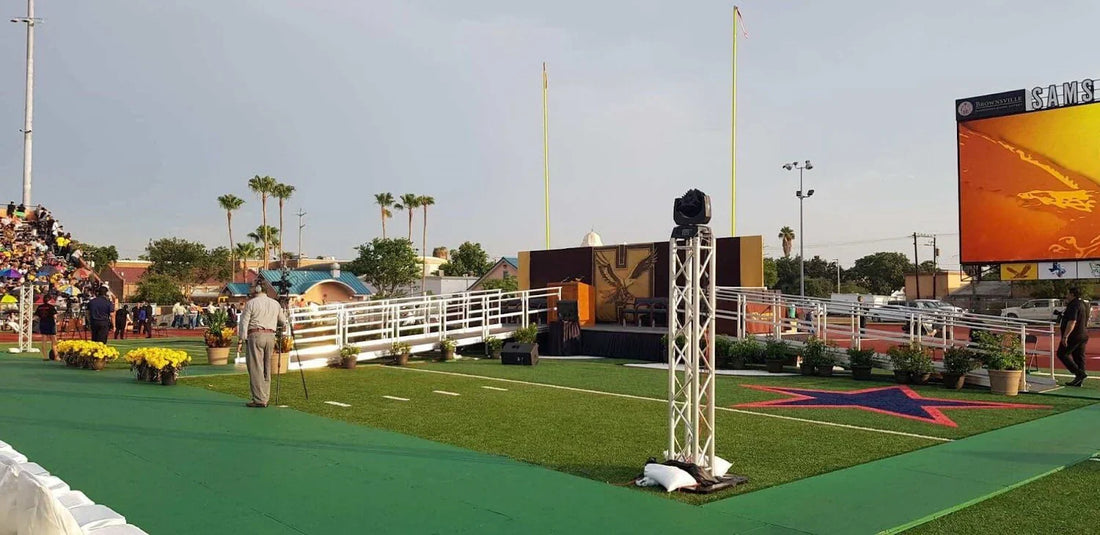Recreational spaces are designed to bring people together, foster connections, and provide opportunities for relaxation and enjoyment. However, for many individuals with disabilities or mobility challenges, these spaces can present obstacles rather than opportunities. Accessibility awareness is not just a matter of compliance—it’s a commitment to inclusivity, equity, and creating spaces where everyone can thrive.
The Need for Accessibility in Recreation
Recreational spaces, from public parks to private resorts, play a vital role in improving physical and mental well-being. Yet, without thoughtful accessibility measures, these spaces exclude a significant portion of the population. According to the CDC, 1 in 4 adults in the United States lives with a disability, emphasizing the importance of designing recreational areas that cater to diverse needs.
For individuals with disabilities, accessible recreational spaces provide:
-
Opportunities for physical activity: Adaptive sports and accessible trails encourage active lifestyles.
-
Social connection: Inclusive spaces foster interaction among friends, families, and community members.
-
Mental well-being: Access to nature and leisure activities reduces stress and boosts happiness.
Common Barriers in Recreational Spaces
Despite progress in accessibility standards, many recreational areas still face challenges in providing universal access. Common barriers include:
-
Uneven or inaccessible terrain: Trails, beaches, and parks often lack pathways suitable for wheelchairs or mobility aids.
-
Inadequate facilities: Restrooms, picnic areas, and playgrounds are sometimes designed without considering accessibility needs.
-
Limited adaptive equipment: Recreational areas may lack tools such as adaptive swings or beach wheelchairs.
-
Communication barriers: Lack of signage in braille or assistive listening devices can hinder access for individuals with visual or auditory impairments.
The Benefits of Accessibility Awareness
Prioritizing accessibility in recreational spaces benefits everyone, not just those with disabilities. Accessible designs often result in safer, more user-friendly spaces for all visitors, including parents with strollers, elderly individuals, and those recovering from injuries.
In addition, inclusive recreational spaces:
-
Enhance community engagement: Welcoming spaces encourage participation and foster a sense of belonging.
-
Boost tourism and revenue: Accessibility can make a destination more attractive to a wider audience, increasing visits and economic impact.
-
Comply with legal standards: Regulations like the Americans with Disabilities Act (ADA) ensure accessibility is not optional but essential.
Steps Toward Accessible Recreation
Creating accessible recreational spaces starts with awareness and action. Here are key steps to consider:
-
Audit existing spaces: Identify and address barriers to accessibility through professional assessments and community feedback.
-
Invest in adaptive infrastructure: Install features such as ramps, handrails, and accessible pathways.
-
Provide adaptive equipment: Ensure availability of tools like mobility aids and sensory-friendly equipment.
-
Train staff: Educate employees about accessibility needs and inclusive practices.
-
Promote inclusion: Highlight accessible features through marketing efforts to attract a diverse audience.
Accessibility in recreational spaces is about more than compliance; it’s about creating a world where everyone, regardless of ability, can fully participate and enjoy life’s experiences. By raising awareness and taking meaningful action, we can ensure that parks, beaches, resorts, and other recreational areas become places of inclusion, connection, and joy.
As a company dedicated to accessibility solutions, EZ-ACCESS® is here to help you create accessible recreational spaces that meet the highest standards of inclusivity and safety. Let’s work together to make recreation accessible to all.
Ready to make your recreational space accessible? Contact EZ-ACCESS today for innovative access solutions.

